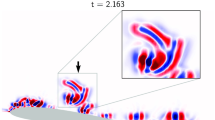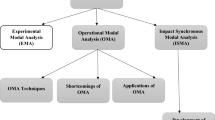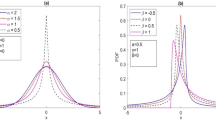Abstract
This paper investigates the use of conventional operational modal analysis (OMA) techniques for modal parameters identification of a rotating system supported by roller bearings. Although largely applied in civil engineering, in-depth studies on different types of systems are still limited in the literature. The novel of the paper is to address such issue by applying conventional OMA methods, such as enhanced frequency domain decomposition (EFDD) and stochastic subspace identification (SSI-data), to identify the modal parameters of a rotating machine, investigating the challenging particularities of these systems due to their inherent operating conditions, especially regarding the presence of harmonic forces, eventually closed-spaced modes, and non-proportional damping due to the bearings. The results presented in the experimental tests showed that, with the use of specific tools, in comparison with traditional experimental modal analysis (EMA), the used OMA methods have managed to successfully identify the modal parameters of a roller bearing supported rotor.
Similar content being viewed by others
References
M. Whelan et al., Operational modal analysis of a multi-span skew bridge using real-time wireless sensor networks, Journal of Vibration and Control, 17(13) (2011) 1952–1963.
J. M. W. Brownjohn, Lateral loading and response for a tall building in the non-seismic doldrums, Engineering Structures, 27(12 SPEC. ISS.) (2005) 1801–1812.
G. James, T. Carne and J. Lauffer, The natural excitation technique (NExT) for modal parameter extraction from operating structures, Modal Analysis: the International Journal of Analytical and Experimental Modal Analysis, 10(4) (1995) 260–277.
B. Bai, J. Zhang, Y. Cui and H. Li, Vibration characteristics investigation of mistuned blisks with receptance substructure component modal synthesis method, Journal of Mechanical Science and Technology, 34 (2020) 2715–2729.
B. Bai, H. Li, W. Zhang and Y. Cui, Application of extremum response surface method-based improved substructure component modal synthesis in mistuned turbine bladed disk, Journal of Sound and Vibration, 472 (2020) 115210.
B. Khuyagbaatar, S. J. Lee, M. Cheon, T. Batbayar, D. Ganbat and Y. H. Kim, Effect of wrist-wearing distal radioulnar joint stabilizer on distal radioulnar joint instability using a forearm finite element model, Journal of Mechanical Science and Technology, 33 (2019) 2503–2508.
D. Kim, W. Kim and W. C. Kim, Dynamic analysis of multilayer ceramic capacitor for vibration reduction of printed circuit board, Journal of Mechanical Science and Technology, 33 (2019) 1595–1601.
P. Van Overschee and B. De Moor, Subspace Identification for Linear Systems, Kluwer Academic Publishers, Norwell, Massachusetts (1996).
R. Brincker, L. Zhang and P. Andersen, Output-only modal analysis by frequency domain decomposition, 25th International Conference on Noise and Vibration Engineering — ISMA, Belgium (2000) 739–745.
R. Tarinejad and M. Pourgholi, Modal identification of arch dams using balanced stochastic subspace identification, Journal of Vibration and Control, 24(10) (2018) 2030–2044.
Y. F. Xu, D.-M. Chen, and W. D. Zhu, Operational modal analysis using lifted continuously scanning laser Doppler vibrometer measurements and its application to baseline-free structural damage identification, Journal of Vibration and Control, 25(7) (2019) 1341–1364.
R. Brincker, C. E. Ventura and P. Andersen, Damping estimation by frequency domain decomposition, 19th International Modal Analysis Conference — IMAC, USA (2001) 698–703.
B. Peeters and G. De Roeck, Reference-based stochastic subspace identification for output-only modal analysis, Mechanical System and Signal Processing, 13(6) (1999) 855–878.
J. S. Bendat and A. G. Piersol, Random Data, John Wiley & Sons, Hoboken, NJ, USA (2010).
R. Brincker and L. Zhang, Frequency domain decomposition revisited, 3rd International Operational Modal Analysis Conference — IOMAC, Italy (2009) 615–626.
F. Magalhães and Á. Cunha, Explaining operational modal analysis with data from an arch bridge, Mechanical System and Signal Processing, 25(5) (2011) 1431–1450.
D. J. Ewins, Modal Testing: Theory, Practice, and Application, 2nd Ed., Research Studies Press, Baldock, Hertfordshire, England (2000).
G. Kouroussis et al., Easymod: a MatLab/Scilab toolbox for teaching modal analysis, 19th International Congress on Sound and Vibration — ICSV, Lithuania (2012) 2616–2623.
N. J. Jacobsen and P. Andersen, Operational modal analysis on structures with rotating parts, 23rd International Conference on Noise and Vibration Engineering — ISMA, Belgium (2008) 2491–2505.
F. Magalhães et al., Damping estimation using free decays and ambient vibration tests, Mechanical System and Signal Processing, 24(5) (2010) 1274–1290.
E. Orlowitz and A. Brandt, Comparison of experimental and operational modal analysis on a laboratory test plate, Measurement: Journal of the International Measurement Confederation, 102 (2017) 121–130.
R. Brincker and C. E. Ventura, Introduction to Operational Modal Analysis, John Wiley & Sons (2015).
SVS, Ambient Response Testing and Modal Identification Software (ARTeMIS Modal) (2019).
Acknowledgments
The authors would like to thank National Council for Scientific and Technological Development — CNPq, grant # 424899/2018-3, and grants # 2015/20363-6 and # 2017/07454-8 from the São Paulo Research Foundation (FAPESP) for the financial support to this research.
Author information
Authors and Affiliations
Corresponding author
Additional information
Gustavo Chaves Storti is a Ph.D. student in the School of Mechanical Engineering at the University of Campinas. His current research interests include structural dynamics, Operational Modal Analysis, Rotordynamics, and Machine Learning.
Tiago Henrique Machado is an Assistant Professor at the School of Mechanical Engineering from the University of Campinas. His current research interests include Rotordynamics, Fault Diagnosis and Identification, Hydrodynamic bearings, Structural Dynamics, Experimental and Operational Modal Analysis, and Machine Learning.
Rights and permissions
About this article
Cite this article
Storti, G., Machado, T. The use of operational modal analysis in the process of modal parameters identification in a rotating machine supported by roller bearings. J Mech Sci Technol 35, 471–480 (2021). https://doi.org/10.1007/s12206-021-0105-3
Received:
Revised:
Accepted:
Published:
Issue Date:
DOI: https://doi.org/10.1007/s12206-021-0105-3




